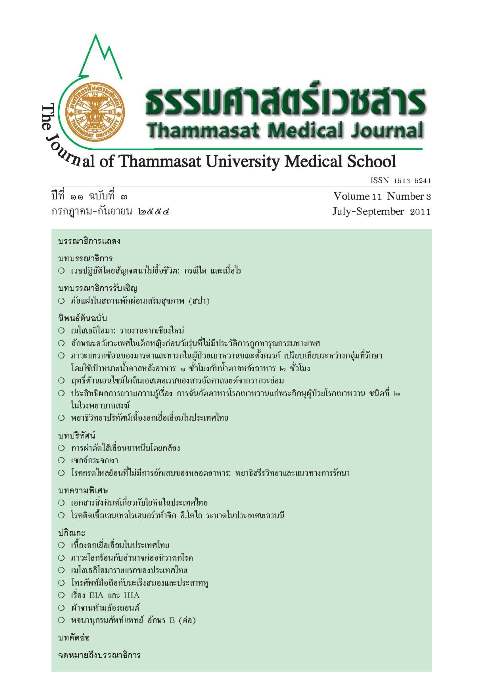The inhibitory effects of the Montelukast-I (Innovator) and Montelukast-L (Local) on the cysteinyl leukotriene production from rat mast cells (RBL-2H3)
Keywords:
Asthma, Montelukast-I (Innovator), Montelukast-L (Local), Cysteinyl leukotriene, rat mast cells (RBL-2H3)Abstract
Introduction: Montelukast has been used for asthma treatment. Recently, montelukast-L is produced locally in Thailand. Therefore, it is important to determine the effi cacy of the local drug in terms of mediator inhibition.
Objective: Effects of montelukast-I and montelukast-L on cysteinyl leukotriene (CysLT) production were investigated.
Materials and Methods: The cytotoxicity of montelukast-I and montelukast-L on RBL-2H3 cells was determined using MTT assay. To compare the pharmacological properties between montelukast-I and montelukast-L, effects of two drugs on rat mast cells (RBL-2H3) cells was monitored by measuring the CysLT released. RBL-2H3 cells were sensitized with anti-dinitrophenyl (DNP)-specifi c IgE for 30 min. Then, cells were treated with the test drugs at the concentrations of 0, 5, 10, 50 and 75 μM for 1 h, followed by the addition of DNP-BSA (10 μg/ml) for 30 min. The total CysLT released in condition media was determined using a leukotriene enzyme immunoassay kit (Amersham).
Results: There was no any cytotoxicity when mast cells were treated with montelukast-I or montelukast-L (5-50 μM). Both drugs could significantly inhibit the release of CysLT compared to that of the control. There was no statistically signifi cant difference between montelukast-I and montelukast-L (25-50 μM) in CysLT inhibition. However, montelukast-I at 5-10 μM obviously suppressed CysLT released from mast cells compared to that of montelukast-L.
Conclusion: Our fi ndings suggest that montelukast-I at low concentrations have a high potential for inhibition of CysLT released from mast cells.
Key words: Asthma, Montelukast-I (Innovator), Montelukast-L (Local), Cysteinyl leukotriene,rat mast cells (RBL-2H3)


